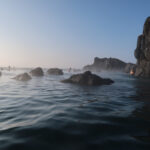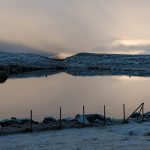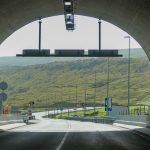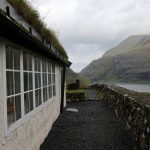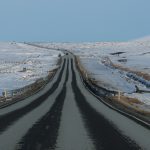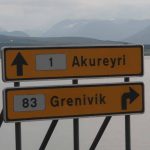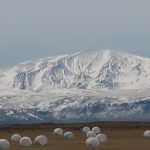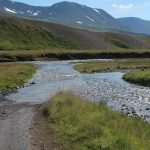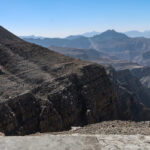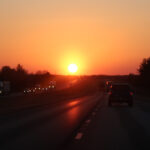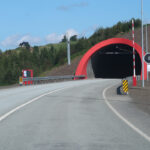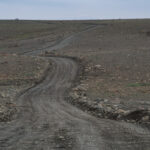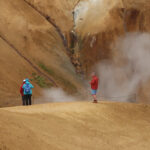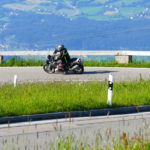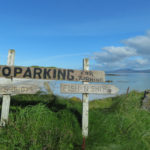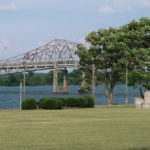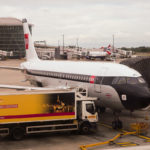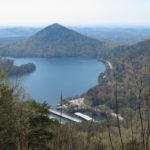Iceland is definitely one of the countries I love to travel to most. The unique nature, a very interesting culture – there are so many experiences you can just do on the 300,000 people island. Not too surprisingly the Nordic place has become a year-round touristic destination. If you don’t want to spend all of your time in Greater Reykjavik (which feels much more of a large metropolis than it actually is) or want to share your experience with fifty other people on coach tours, you simply need a rental car.
Iceland is expansive – and renting a car is even expensive compared to other expenses over there. Thus, I felt to give you a small guidance about my thoughts about renting a car – but also using it on the road later. Hope you like that kind of format.
About Renting A Car in Iceland
When I initially made my mind about writing a posting like this one, I did not want to split the posting into “renting” and “driving” – and I still feel mixed about it. You definitely need to read the full article to decide on your travel plan. Driving a car in Iceland in some parts of the country will require significantly more concentration and skill than you might expect from a place where 300,000 people live in country which is just slightly larger than South Korea or Hungary. Picking the wrong car might either destroy your dream vacation in Iceland – or leave you with massive rental fees for a car which is equipped for situations you never came across during your trip.
The Choice of the right Car
There is hardly any other country I ever traveled to where the choice of the right rental car is as essential as in Iceland. Plan ahead what you want to do. One key reason for that is that the “posh” options are even more expensive than in other markets – and very often you don’t need them. Speed limit is strict and low anyway. If you are just traveling on the Ring Road or majorly on paved roads, a small car is absolutely fine. You just need a 4WD if you want to go to the highlands or expect adverse conditions. If you drive in the winter, most rental companies will give you padded tires in the allowed period (1st November until 15th April) anyway.
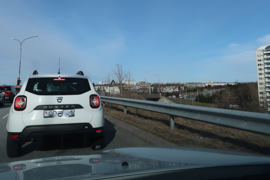
If you want to travel highland roads (in summer, they are closed most of the year), you of course need a four wheel drive. Follow the common safety rules and try to travel in groups of two cars, where possible, especially in remote locations. A very common suggestions is the Suzuki Jimny, which is really a nice option to drive on gravel roads. The car is very nice in rocky conditions and in steeper climbs.
However, if your route also includes fords (which means more or less any F-road apart from the Kjölur Route), the Jimny is also known to have a rather low air intake, which may be very unfavorable. For all trips I took, the Jimny or the typically cheapest option, the Dacia Duster, got the job nicely done. However, I did not go for the major challenges – and also was smart enough to turn around when the road was too challenging for me and the car.
Car or Camper?
That’s a tough one. I also wrote a bit about it in our Iceland Ring Road Trip reprise. A camper is charming (and yes, you also get 4WD campers, also on a pickup basis with a rather high clearance). Icelandic hotel prices can be quite a challenge, compared to other markets (somehow, in line with rental car prices… Unfortunately…). Being able to choose a camping ground or cooking your own mean at noon or in the evening can be a nice option.
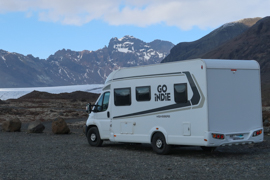
If the additional money for a camper pays back, is also based on your preferences of comfort. The smaller ones, based on mini trucks, are very popular – but they also have the lowest level of comfort. A bed, a kitchen, some stuff to hang out and relax – that’s it… And yes, I did not miss the loo – some of the vans don’t feature some sort of toilet as well.
One Cars or Two Cars?
It is not the most common thing you read in other postings about that topic, but depending on your desired routing, there may be the scenarios in which renting two cars might be a better option than renting a single one. Of course, you should not have both rentals in parallel for your whole trip. For example, I could imagine that you first do standard road sightseeing with an “ordinary” car, before you change to a 4WD and explore the highlands. If you travel the ring road, you might also add a more mountain-proof vehicle for two or three days at some place in the North.
The Rental Location – Cheap of Comfy?
Not too rarely, you arrive in comparably odd times in Iceland, so that you just want to have a quick option to sit inside your mobility provider for the following days. However, if you are not in a hurry and/or have a longer stay in Iceland, I definitely recommend you to check out a bunch of rental car providers and offers. It may be especially a big saver to take the bus to Greater Reykjavik and use one of the local providers there.
My favorite option on Iceland is definitely the local Blue Car Rental, but you will find some other reviews on the website as well.
Insurace – Gravel, Windscreen and more
Iceland is unique – and so is driving in Iceland and its dangers. Most Icelandic people are rather relaxed drivers, so that I would feel the chances of getting involved in a traffic accident are low. Car theft? How should you get the vehicle out of Iceland, regarding the very few ferry connections.
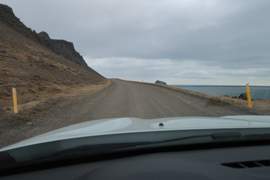
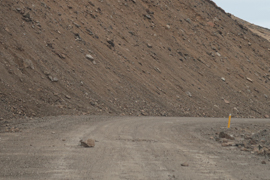
The threats to your car are very different: gravel, ash and your driving skills. Gravel is the most serious one, I would say. If you come across a truck or for whatever reason get too close to a car in front of you, a stone hit which cracks your windscreen may happen everywhere – even on paved roads. I might have had some six, seven car rentals in Iceland and ran into that twice. Protect yourself against it. Sharp stones may also give you a puncture to your tires. Can you really see that the car’s tires are in top condition when you receive the car? Check them as good as possible – and if the tire pressure warning is lighting up when you receive the car, better check it even more carefully. You cannot insure against it.
This Ash Thing…
And then, there is ash. You might have the wrong thought about it. It is not about parking your car next to a volcano and after a bite at the local restaurant, the volcano happened to erupt a bit and damage your rented four wheels. This will happen very rarely, even in Iceland. However, the Icelandic soil is light, almost a bit of dusty. Especially in the spring months after the snow season, winds may blow strongly and thus make that soil crack along your rental car. It may destroy the paint – and even crack windows. It will happen very unlikely in summer or winter, but especially in spring, buying ash insurance is a thing, even though it sounds weird.
Finally, be responsible. Rent the right car which suits your trip needs. If the car you in fact need and which makes you feel comfortable comes with a too high price tag, alter the trip. Don’t try to get too close to the limits. Okay, I will say that a bunch of times in this posting.
Read The Conditions Carefully
You want to put the pedal to the metal? Iceland might not be the right country for you. Especially if you leave the main roads, you need to invest much more into exploring the road conditions than in other countries. Of course, this especially applies to gravel and F roads, which are mentally more demanding. A sharp stone can lead to a broken tire. A fording which is a bit deeper than expected might result in a loss of license plate. Yeah, I explored all that during my travels already. I was not brave as well.
Winter? Padded Tires!
I already mentioned padded tires – you might better know them as spike tires. They contain small metal pins for a better grip on icy and snowy roads.. In the winter period, you are allowed to drive with them all over Iceland (November to mid-April, see below). They are quite an issue in Greater Reykjavik, where the road conditions typically don’t require that winter extra. However, the car runs significantly louder, runs on more fuel… and harms the roads significantly more than standard tires.
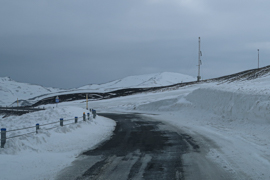
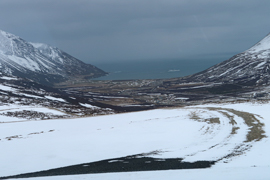
Of course, as a tourist, you will typically leave the metropolitan area (the public transport around Reykjavik is good enough and the parking is too high that you don’t necessarily need a rental car for the city trip anyway). Especially due to cold conditions combined with stronger winds, I do appreciate driving with padded tires in winter – even though the environmental effect is not deniable.
Winter Road Clearance
In this context, I should also mention that in winter, you more frequently face short-notice road closures in Iceland compared to other countries. The key reason for that is that the Icelandic Road Services typically prefer to close a certain section of a road and clear it entirely in contrast to plow the snow during running traffic. This feels to be the more efficient strategy and is overall leading to better road conditions. Nonetheless, it may feel strange to foreigners. Another reason why I recommend road.is (see below).
Check the Car as Good as Possible
Even though I am nowadays quite experienced in driving in Iceland, I typically go for rather high levels of insurance, just in order to reduce the risk of trouble. I would say that in Iceland, you have a much higher chance of car damages compared to other rental car markets. You might not run into a car crash, but there are a lot of minor crashes and incidences. For that reason, you easily miss one of these kinds of damages and should check the car for them carefully before you drive away from the rental office:
- Are the car tires fine? Is the tire pressure warning on? This may happen if the car is parked for a longer while (does that really happen often nowadays?). Thus, in that case, I would recommend to inflate the tires at nominal pressure again and – in case the lights pop up again, to change the car or ask the company to review the tires. There is no better place to do so than if you are still around Keflavik and Reykjavik.
- Gravel hits are frequent. Of course, you may have body hits and you check that in other rental car markets as well. Rather frequent (due to the gravel roads) are gravel hits on the windscreen – so even if it is dark and raining (which makes it really ugly to identify them), I recommend to carefully check for that as well
In that regard, rental car company reviews are helpful as well. Like everywhere else in the world, the “sensitivity” of car providers what is a car damage (in contrast to a meaningless scar) and also the exactness of damage evaluation by the provider before you receive the car. This is also why I rather stuck with providers which so far gave me a good experience.
About Driving A Car in Iceland
As I wrote above, planning a road trip has a lot do to with how much you can and want to invest into it. If you want to have a relaxed easy trip, a ring route journey is a cool option. I have a lot of memories about driving in Iceland – good and bad ones. Here are some hints from my personal point of view:
Basic Traffic Rules


Overall, driving in Iceland is easy and there are no really surprising traffic rules. If you come back from some days on the Icelandic countryside (which I would even include major cities like Akureyri to), driving in and around Reykjavik might feel a bit of stressful, though. The signs are in line with international sign conventions (which are not applied in North America, though).
Basic rules are:
- You drive on the right hand side, Iceland is metric
- There are no limitations to drive a car as a foreigner, Some driving permits might n need an international drivers license
- Speed limit outside towns are 90 km/h on paved roads, 80 km/h on gravel/unpaved roads and 50 km/h in towns
- Car headlight and seat belts are mandatory
- Driving after the consumption of alcohol or drugs is illegal. Like all these kinds of offenses, traffic violations might be very expanse. The blood alcohol limit is just 0.02 per cent.
- A typical traffic element, especially in rural Iceland, is the Einbreid Bru. Bridges are often just one-laned. You may have to wait for another car to cross the bridge first. The first one to approach the bridge has priority to cross it. Rarely, there are Eindreid Göng signs for one-lane tunnels, you can typically see through the whole tunnel in that situation, Priority is equivalent.
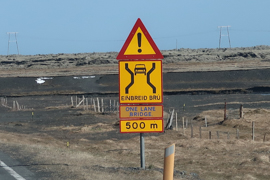

There are also road signs notifying you of river crossings etc. in mountain areas. Most of them are self-explanatory. There is a nice overview of Icelandic road sings on Wikipedia.
Road.is is your best Friend in Iceland
Road.is is the website of the Icelandic Road Authority. They provide a lot of valuable information, e.g. about road closures, road conditions or the current weather. This is not only important in summer when you want to check if the F-road you plan to take is really open for traffic. In winter, for example, sections of the ring road are sometimes closed as it is much faster to clear the road from snow, ice and potentially cars which sled off the road.
Google Maps is not enough in the Highlands
If you do some research, you will find maps which are much more precise than Google Maps in the highlands. During my trips, I for example wanted to have the exact location of river crossings, indicators about the steepness of road sections. Some (free) maps also indicate if they feel you can do the road by cycle or motorbike – which is a good indicator about the size of gravel and difficulty of driving. Navigation, however, is less important. Especially in the highlands, you won’t have too frequent options for a left or right deviation. You can do these decisions easily by a good map and GPS.
Gravel Roads? Don’t be afraid – but keep Distance!
Iceland is putting a lot of effort into being more touristic and welcome to foreigners, so that the share of unpaved roads feels to significantly decrease. Especially for small roads and local connections outside of cities, they are nonetheless rather frequent. Of course, there are different types of unpaved roads, some are a bit more rough. Hardly any of them is a reason to really think about driving a 4WD car. In general, there is a slightly decreased maximum speed of 80 km/h.
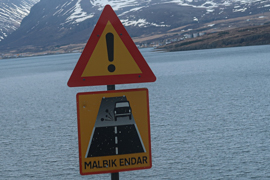
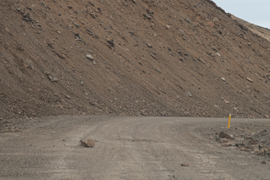
Quite some of the roads allow you to easily drive 60 to 80 km/h indeed. You should, however, care about keeping increased distance. The more obvious reasons are that the braking distance is increased and that a car in front of you may throw gravel on you. Furthermore, there is also a huge risk that oncoming traffic is hitting you with stones. Thus, reducing speed when a car is approaching and rather aiming for the outer side of road is key. Last, but not least, you should of course rather more for major stones and rocks on the streets.
F-Roads need Preparation!
Especially when you are going for F-roads, you should be prepared and know a bit of the road conditions and challenges of them. Nowadays, there are multiple excellent providers of videos on YouTube, which give you a great idea whether you feel your driving skills and and the abilities of your car are sufficient. Of course, as these roads are prepared every year again and weather has a lot of impact on the condition of the road (not only fording rivers, but also the condition of the road as such). Thus, updated information before you enter the sections are key.
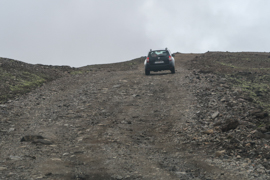
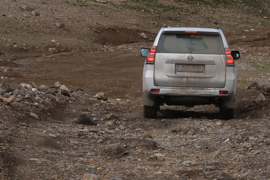
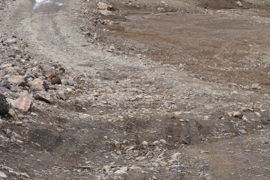
Fording Rivers
Fording (crossing) rivers is one of the most signature experiences about driving in Iceland. It is fun, you will tell your friends at home about it – but it is also dangerous. If you make a mistake, you might get stuck – but, even worse, whatever kind of platinum insurance you bought at your car rental, they will pay the same amount: nothing. My golden rules of fording rivers are not too different from what you might read on other website:
- Inspect the ford first. Unless you are dealing with a small creek, at least stop, get out of the car, look at the river bed. Inspect for rocks. Create a route how you want to cross the river – and if it fails, have an alternative in mind.
- The air inflow is the lung of the engine. Might be the easiest and somehow silliest point of all in here, but: obviously, you cannot ford rivers which are deeper than the air inlet of your motor (thus, some Icelandic cars have these cute chimney-alike things). Water in the engine is not fun at all, so include a significant buffer in your thoughts. Some guides give a rule of thumb that the water level must never be higher than the top of your tires.
- Go with the flow. You are in an environment with a lot of water. Moving water. Never try to drive against the flow of the water. Go with the flow – or in worst case, cross it in a right angle.
- The Slow Water Paradoxon. Slow water is safe water? Not at all! Slow flowing water means that it is deep.Shallow water is faster.
- Get the grip – and keep it. Use 4WD with a low range. The most important thing is that you keep grip on the ground. If your tires start slipping, this may be the first step into trouble.
- Don’t stop in the water. That should be obvious. A river crossing is neither a place for a nice Instagram shot nor one to enjoy the beautiful view. Get in there, get out there.
- Respect the environment. Typically, the spots where you should enter the river and where you should leave it are marked. Don’t damage the environment and look for other spots – they won’t be better anyway.
- DON’T dare to be stupid. Yeah, Dare To Be Stupid is a nice Weird Al Yankovic song – but it is not a good way of treating Icelandic river crossings at all. If you feel you cannot do it, don’t do it! Sometimes, it may help to wait for some other cars and see how they do it – sometimes, there is no other option than turning back. See next point.

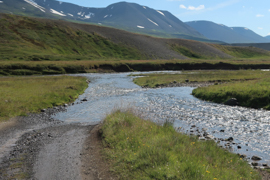
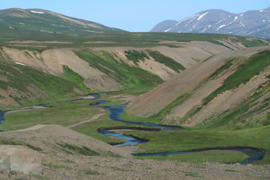
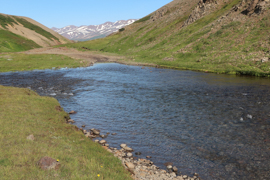
There is also another option If you feel unsafe about all that but just want to have the experience. There are also some guided rental car tours where you drive across rivers with the help of a guide. A bit of pricey, but the safest option to come back home with some proud driving memories from Iceland.
Be ready to U-turn in the Highlands!
Some of the most scenic F-roads and dead-end ones anyway – but even if you really want to travel from A to B in the Highlands, always think about what it might mean if you have to turn around. Sometimes, roads are more gravely than you expected or you decide that this river crossing is just too tough for you. I had some U-turns in Iceland as well. With slightly higher temperatures or a bit of rain, a river crossing you did an hour ago might have turned into a too tough challenge. Never reach your limits and go for a buffer.
Car Rental in Iceland
Here are all my postings related to car rental reviews and Iceland:
Postings about Road Trips
Here are all road trips on Flyctory.com

